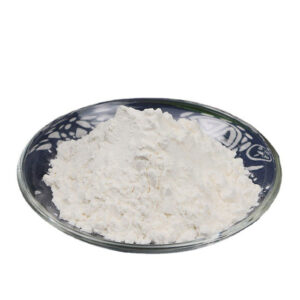توضیحات
| Chemical Name: | Paeoniflorin |
| Other Name: | Paeoniflorin extract |
| CAS: | 23180-57-6 |
| EINECS: | 245-476-2 |
| Type: | Pharmaceutical raw materials; Cosmetic raw materials; Plant extracts; Flavors and fragrances; Medicines, pesticides, and dye intermediates |
| Molecular Formula: | C23H28O11 |
| Molecular Weight: | 480.47 |
What is Paeoniflorin?
Peony is derived from the dried root of the perennial herbaceous plant in the Paeoniaceae family. This herb has a bitter, sour taste and is slightly cold in nature. In traditional Chinese medicine, it targets the liver and spleen meridians, providing various benefits such as:
- Calming the liver and relieving pain
- Nourishing blood and regulating menstruation
- Astringing yin and stopping sweating
Commonly, peony is used to address conditions like headaches, dizziness, rib pain, abdominal pain, cramps, and irregular menstruation, as well as symptoms like spontaneous perspiration and night sweats.
What is Paeoniflorin?
Paeoniflorin is the primary active component extracted from peony. It has numerous physiological benefits, including anti-inflammatory, immune-boosting, liver-protective, and analgesic effects.
Paeoniflorin has a molecular formula of C23H28O11 and belongs to the monoterpenoid compound category. At room temperature, it appears as a white amorphous powder that readily absorbs moisture and is sensitive to heat, acid, and alkali.
Pharmacological Effects
Research has demonstrated that paeoniflorin offers a wide range of pharmacological benefits, such as:
- Antidepressant
- Anti-inflammatory
- Analgesic
- Anti-tumor
- Liver protection
- Nerve protection
- Immune regulation
- Sedative and hypnotic effects
Paeoniflorin works by activating adenosine A1 receptors in the kidneys, which can reverse guanidine-induced antihypertensive effects.
Clinical Applications
This compound can protect tissue cells from oxidative stress, inhibit astrocyte activation, and enhance neuroprotection. It effectively counters damage to dopaminergic nerve cells, improving conditions like bradykinesia. Consequently, paeoniflorin shows promise in treating neurodegenerative diseases such as Alzheimer’s and Parkinson’s, as well as epilepsy.
Additionally, it may combat tumors and autoimmune diseases, including rheumatoid arthritis and ankylosing spondylitis. Animal studies suggest that it can significantly lower blood sugar levels and offers protective benefits for heart and lung cells.
Conclusion
Paeoniflorin, the active ingredient in peony, stands out for its diverse therapeutic properties, making it a valuable component in traditional and modern medicinal practices. Its wide-ranging effects underscore its potential in treating various health conditions.
The traditional Chinese medicine ingredient comes from the root of peony. It has antispasmodic and analgesic properties in traditional Chinese medicine. Anti-myocardial ischemia, anticoagulation and platelet aggregation inhibition; antispasmodic effect; analgesic and sedative effect; anti-inflammatory and anti-ulcer effect; hepatoprotective effect; immunity regulating effect and anti-hyperglycemia effect; hypoxia resistance effect, etc. Clinical application: used for the treatment of coronary heart disease; used for senile diseases, enhancing physical and immune functions, anti-inflammatory and cough-relieving, eliminating phlegm and relieving asthma, etc., especially as an auxiliary drug in the treatment of chronic respiratory diseases in the elderly.








نقد و بررسیها
هنوز بررسیای ثبت نشده است.